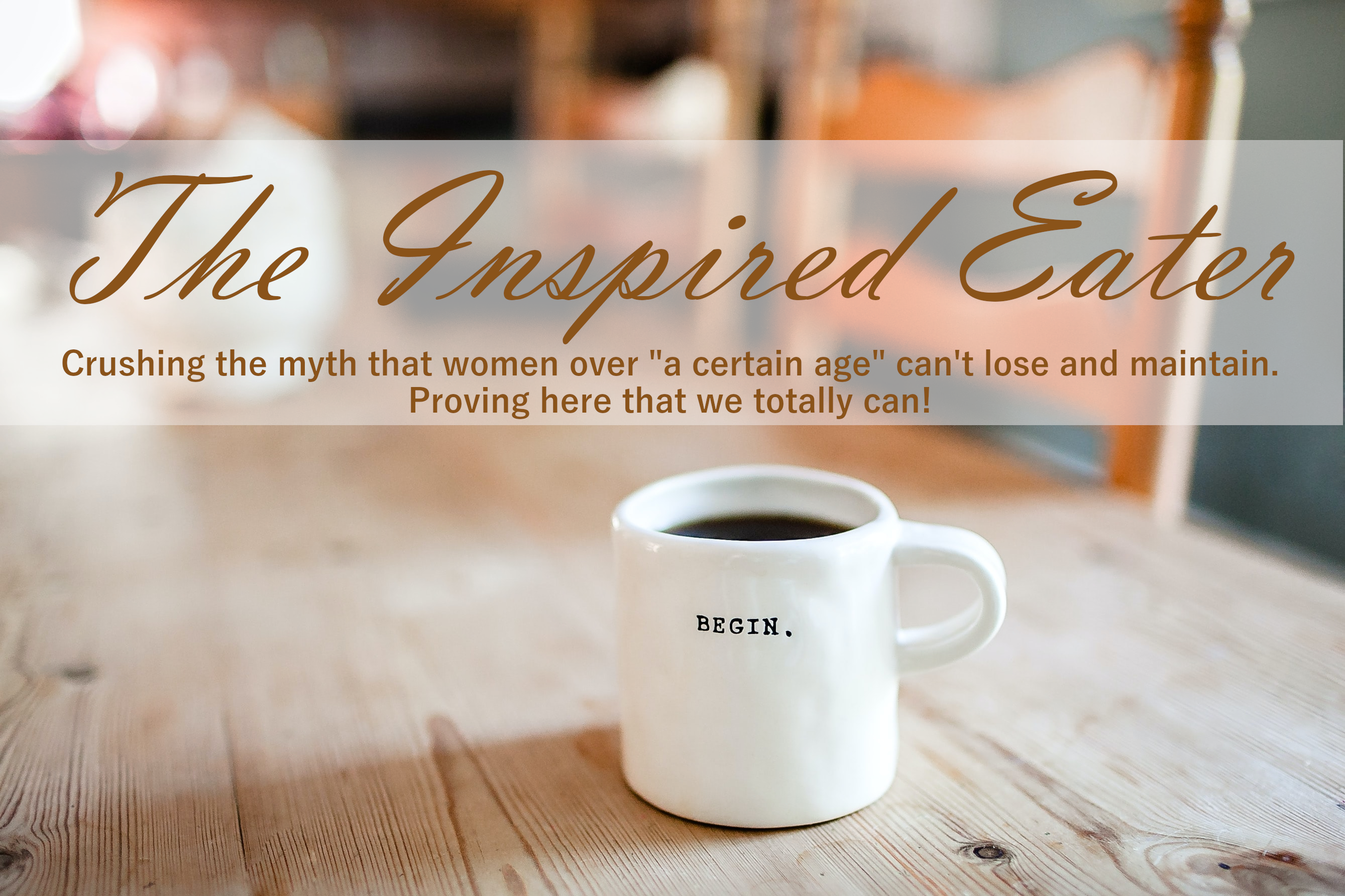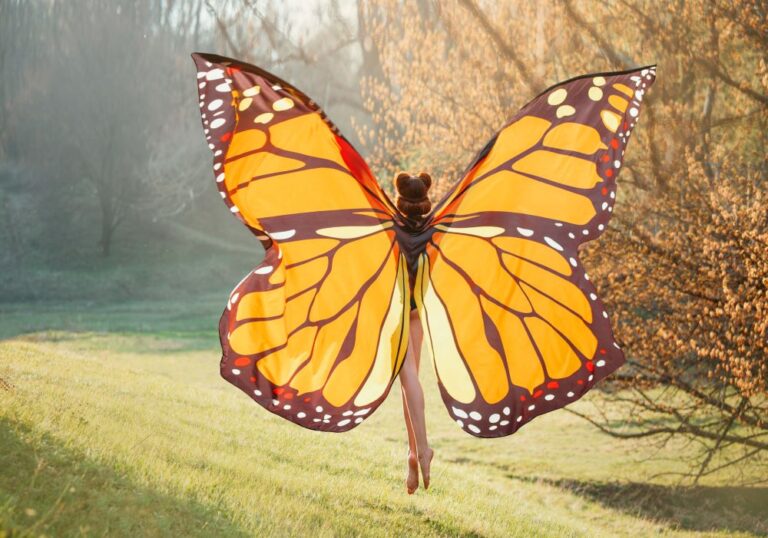Pearl One
I’d hit bottom and had a choice: I could fall into the black abyss of frustration or I could go “butterfly.”
I hit my own version of bottom in the late ‘90s. I was at my heaviest and was just done. I’d lost a little weight for my cousin’s wedding and – while I know this is a tired cliché – when I got a load of the family wedding photos it looked like someone had inflated my arms, legs and cheeks like balloons using a tire pump.
It just wasn’t me. I’d hit my version of bottom.
And the beauty of hitting bottom: you can either fall off the edge into the black abyss (give up and continue eating and growing, eating and growing etc. etc. ), or go through a metamorphosis.
I chose the metamorphosis route.
My brain was fed-up and calling BS on my lame insistence that silly diets or daunting fitness plans would ever work.
Because they don’t.
The deepest regions of my brain knew the unvarnished truth. I needed to stop acting innocently baffled – “I’m not sure why I keep gaining. The dryer must be shrinking my clothes” — and align myself with reality.
No more believing in lollipops and unicorns. It didn’t matter if I had an expensive Peloton in my bedroom or a membership to a five-star fitness club. It didn’t matter if I did the Marie Osmond or the Kirstie Alley plan (wait, aren’t they the same?), deep down I knew.
It was time for a major overhaul in how I dealt with food.
My BS days were over.
Don’t Ask What Your Smart Eating Plan Can Do For You
Here’s the thing: none of the eating plans like WW, Nutrisystem, slow carb, Jenny Craig, Noom and so forth “work.”
You work them.
Does it sound like I’m merely splitting hairs? Let me be clear: there’s a ginormous difference between “hoping” for success on such-and-such diet versus using your preferred food plan as a powerful tool to create a forever change in your life.
Ask What You Can Do For Your Smart Eating Plan
After hitting bottom and committing to a forever eating plan (in my case, Weight Watchers), here’s how I continued to take the reins over the size of my body:
- I committed to a daily food journal. Almost two decades later, I still keep a daily journal of what I eat.
- I read and read and read everything I can find on Big Food so that I can play better defense with an industry solely in it to create abundant profit. Big Food doesn’t care about you or me. That’s just the line we’ve been fed all these many decades. The companies pay ad people top-dollar to create feel-good campaigns that glorify the fun of junk-eating and who are only in it for the billions. It’s our job to recognize the reality as we shop.
- I stopped using food and food-porn for entertainment.
- In my preservation years, I’ve made a conscious decision to get more involved with my favorite things in life that don’t come with calories like my sweet animals and books that I can’t put down. I love listening to specific podcasts. I love to ride my outdoor recumbent trike. Sometimes I even like cleaning the house and making it cozier.
- Almost forgot the wild birds. I love feeding the wild birds and sitting outside with coffee every morning watching them eat. (Have to add: I didn’t mention my kids because it’s a given that they’re my first and last thought of each day. Plus, they’re twenty-one now and don’t want to be my favorite thing at the moment.)
Journal-write to these two questions: What are your favorite things in life? And how can you turn up the volume on each? I understand that eating is fun, but how can you shift towards having a great time without food? 🎃
Pearl Two
Hey! If you’re ready to give up ice cream and cream cheese with little effort, this book is for you. Ultra-Processed People: The Science Behind Food That Isn’t Food by Chris van Tulleken is an awesome intro to what we call “food” and how it’s made. The chapter on ice cream is worth the read all on its own. Same with cream cheese. The Scarfer tried to put cream cheese on a bagel for me the other morning until I went apoplectic on the poor guy and put a stop to what he was doing. I highly recommend this book.
Another book that I 3,000 percent recommend is Magic Pill: The Extraordinary Benefits and Disturbing Risks of the New Weight-Loss Drugs by Johann Hari. The author does a deep-dive into the good and the bad about the new weight loss meds.
It’s written by a journalist who wanted to lose weight himself so as the book opens we see Hari go on one of the medications. Hari stays amazingly balanced and fair throughout his research; he doesn’t take a position on either side of the medication debate. One more plus: he’s not boring. Some nonfiction books can drag, his does not.
These two books aren’t being included as book-desserts because while they’re super illuminating about their topic, they serve up good information rather than a compelling story. Still, they’re both fantastic.🎃
Pearl Three
Sequencing is taken directly from Cognitive Behavioral Therapy (CBT). The purpose of sequences is to help us move from reacting to circumstances to responding. I encourage you to do a sequence a day in your journal. Powerful stuff.
Default Sequence
- Situation (something very concrete): We have ten weeks until Christmas.
- Thought: I think about pasts Christmases and all the work I had to do.
- Feeling: Dread.
- Action: I’m immobile.
- Result: Nothing happens and I eventually end up rushing to get everything handled before the big day.
Chosen Thought Sequence
- Situation (something very concrete): We have ten weeks until Christmas.
- Thought: If I plan now, I can spread out the biggest jobs.
- Feeling: I think that with planning this is workable.
- Action: I sit down to write a plan of the many things I want to do.
- Result: I write my plan and get on with it.
Pearl Four
Books love us and want us to be happy!
The Girl Who Saved the King of Sweden: a Novel by Jonas Johansson. This guy is one of my favorite “feel good” authors. His dry wit is unparalleled. I actually reread his books because I see new jokes the second time around. If you’ve already read The Girl Who Saved, definitely read Sweet, Sweet Revenge, LTD. More dry wit with a story that will stay with you. I often see a book title and remember loving the story, but can’t really remember the plot. Not the case with Sweet, Sweet Revenge, LTD. I remember it well because the story is funny and so well told. Both books – all of Mr. Johansson’s books – are knock out book-desserts. 🎃
Pearl Five
“The most important thing in life is to stop saying ‘I wish’ and start saying ‘I will’. Consider nothing impossible then treat possibilities as probabilities.” -Charles Dickens 🎃
I’m so curious: are you currently working to embed a habit? I’d love to hear in the comments below what habit you’re currently working on. I always keep in mind the study out of England in 2009 that concluded it takes sixty-six days for our new habit to install itself into the automatic part of our brain. The first two weeks can be the hardest. if you’re at an obstacle while on the Smart Eating Path, always default to planning. Planning will have your back every time.
Have wonderful week!
🎃, Wendy
You know the scoop: I’m an Amazon affiliate. If you buy from a link in my post, I’ll receive money, but the arrangement won’t cost you a dime.
Are you new to the Inspired Eater? Welcome!! This blog won’t make much sense until you first read the Aunt Bea post (and you’ll find Aunt Bea on this page to the right under my short bio). On your cell you’ll see it immediately following the first post. After you enter your email address, the Aunt Bea article will be sent to your email’s inbox. If it’s not there, you might check the spam folder. And always feel free to email me at Wendy@TheInspiredEater.com and I’ll get Aunt Bea right to you!!
I am not an expert, a doctor, a surgeon, a nurse or a nutritionist: the information within TheInspiredEater.com is based solely on my personal experience and is not intended to be used as a substitute for professional medical advice, diagnosis, or treatment. ♥


2 Comments
I loved Ultra Processed People! I even pointed out to my family that ice cream no longer even says Ice cream on the container– most of them now say frozen dairy dessert.
that book totally impacted me. Ice cream doesn’t sound at all good anymore.